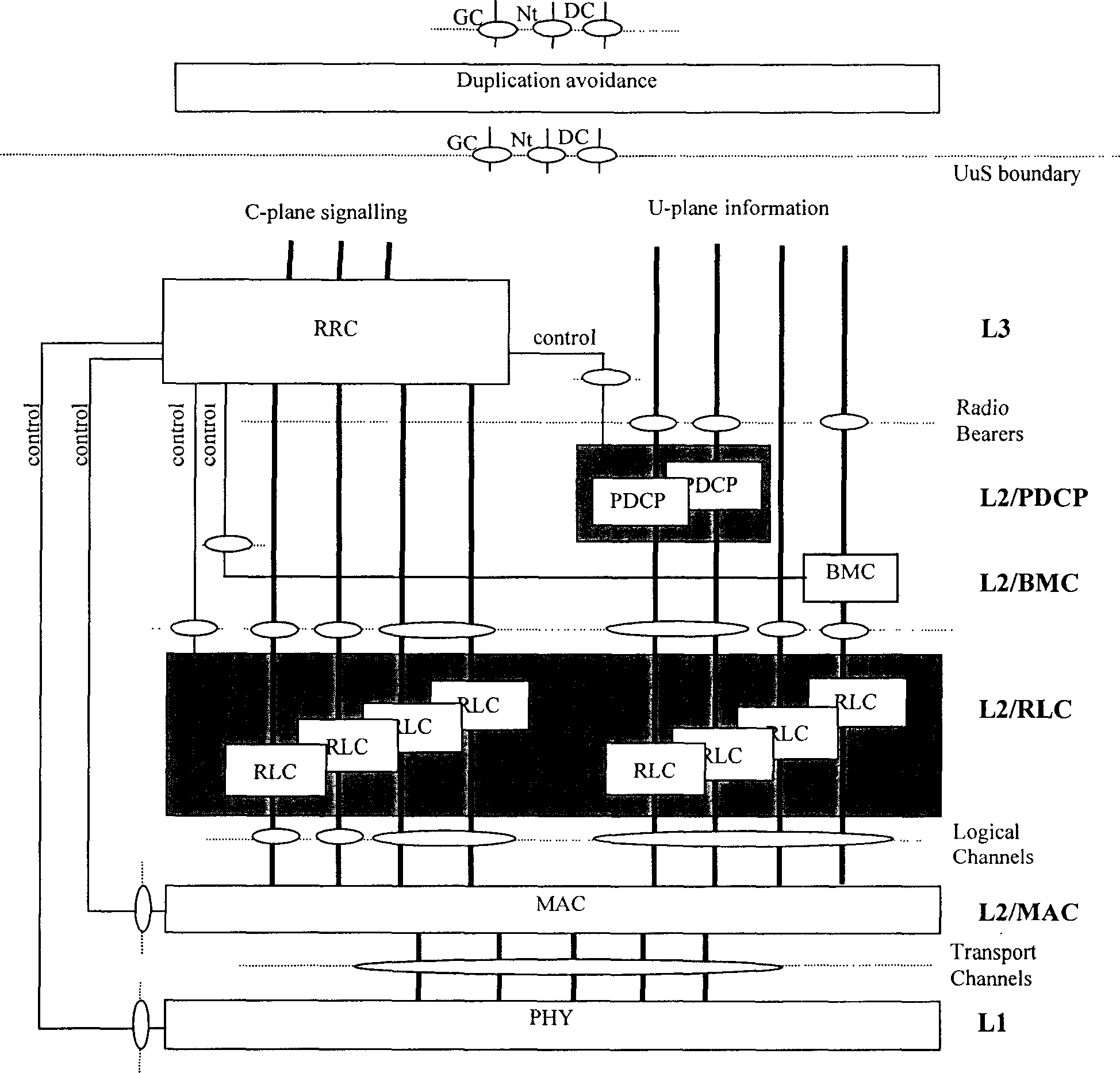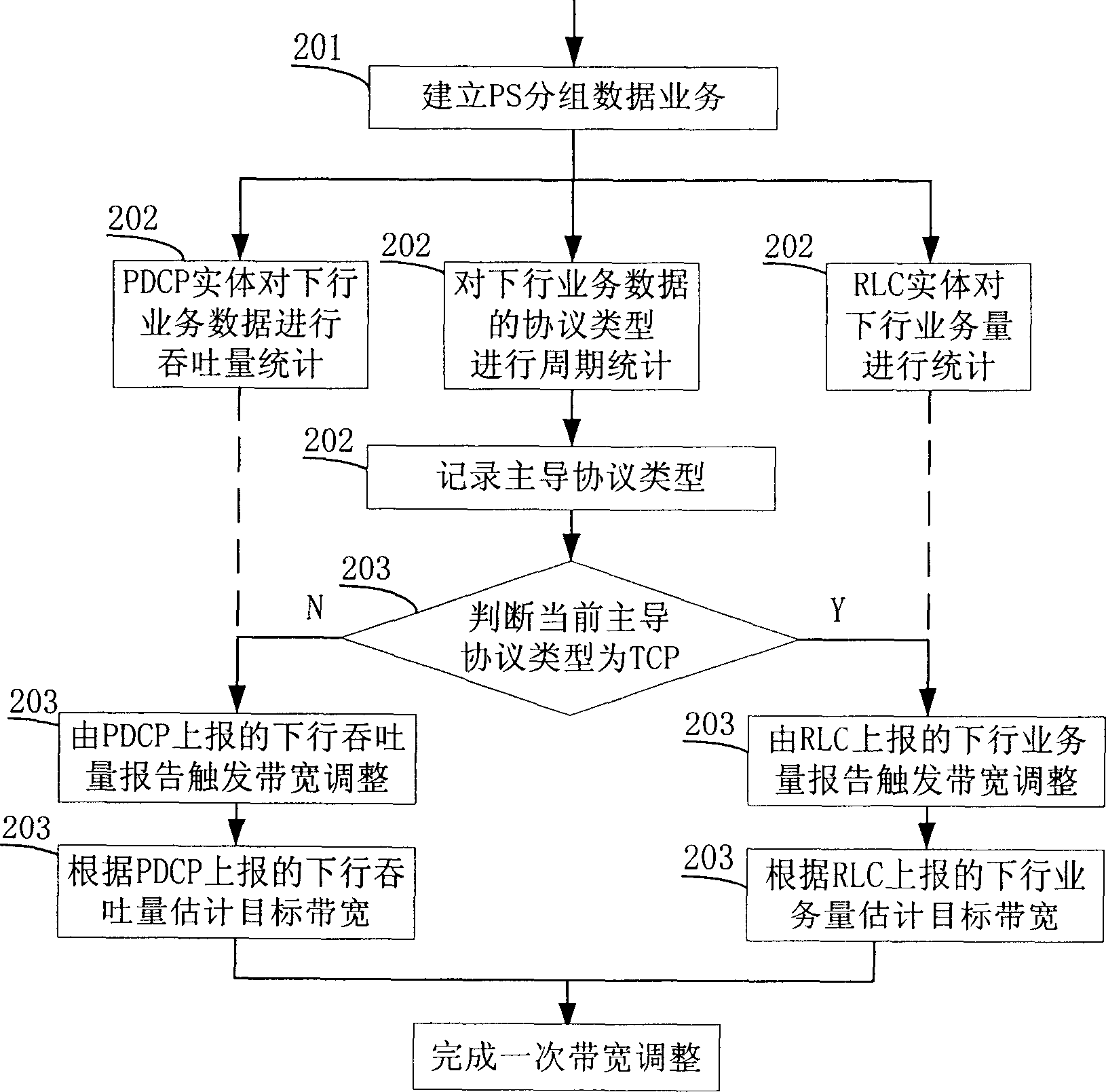Adaptive bandwidth regulating method for block data business
A packet data service and self-adaptive bandwidth technology, which is applied in the communication between multiple stations, etc., can solve the problems that it is not a TCP service, cannot accurately reflect the data source rate of non-TCP protocol, and does not consider the influence of the data source rate, etc. , to achieve the effect of ensuring service quality, strengthening pertinence and rationality, and saving downlink bandwidth resources
- Summary
- Abstract
- Description
- Claims
- Application Information
AI Technical Summary
Problems solved by technology
Method used
Image
Examples
Embodiment Construction
[0025] Because the TCP protocol has carried out source rate control on the upper layer business it bears, and the non-TCP protocol has not carried out source rate control on the upper layer business it has carried, so the present invention divides the received data packet into TCP and non-TCP according to this characteristic Two types, and adaptive bandwidth adjustment according to their respective characteristics. Refer to the attached figure 2 The method for adjusting the adaptive bandwidth of the packet data service proposed by the present invention is described in detail, including the following steps:
[0026] Step 201: After the RNC (radio network controller) receives the downlink PS packet data service establishment request, it allocates a suitable initial bandwidth according to the current load of the cell and other resource conditions, and establishes corresponding PDCP (packet data convergence protocol), RLC (Radio Link Control) and other examples. This step is a ...
PUM
 Login to View More
Login to View More Abstract
Description
Claims
Application Information
 Login to View More
Login to View More - R&D
- Intellectual Property
- Life Sciences
- Materials
- Tech Scout
- Unparalleled Data Quality
- Higher Quality Content
- 60% Fewer Hallucinations
Browse by: Latest US Patents, China's latest patents, Technical Efficacy Thesaurus, Application Domain, Technology Topic, Popular Technical Reports.
© 2025 PatSnap. All rights reserved.Legal|Privacy policy|Modern Slavery Act Transparency Statement|Sitemap|About US| Contact US: help@patsnap.com


